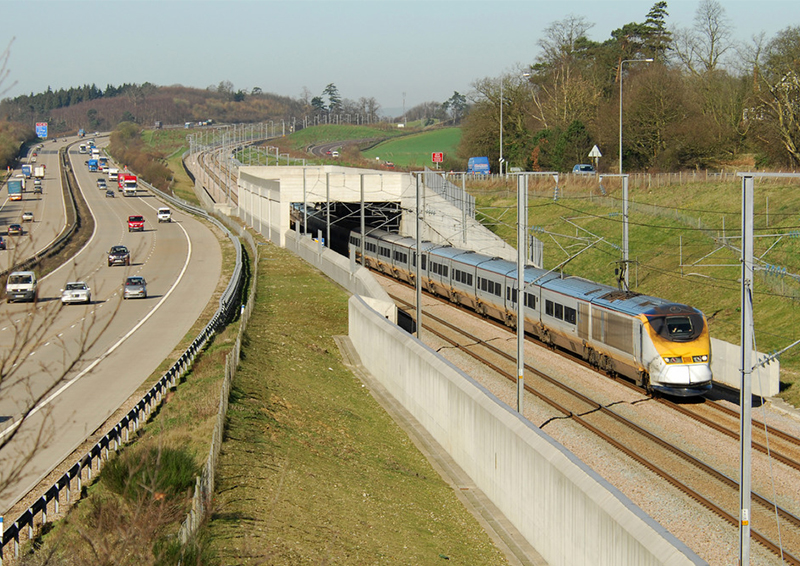Sub-national transport bodies
Sub-national transport bodies (SNTBs) are there to counteract the widening gap between major transport projects of national significance and the ever smaller projects that could be funded by local transport authorities.
Geoff French, Interim Chair of the Transport Forum, Transport for the South East, explains how they work.
Contents |
[edit] Introduction
SNTBs are emerging as the way in which the gap between national and local projects can be filled to ensure that there is an effective regional voice in the planning, prioritisation and delivery of transport improvements.
To do this, SNTBs have to reflect the characteristics of the area they cover and bring a coherent and cohesive view to the assessment of what their region needs. Therefore, the structure of the SNTBs in the different parts of England will all be different to achieve their aims.
The Department for Transport (DfT) are clearly supporting the establishment of SNTBs. Transport for London was established almost 20 years ago and Transport for the North became a statutory body earlier in 2018.
Three new SNTBs – Midlands Connect, England’s Economic Heartland (EEH) and Transport for the South East (TfSE) – are now being developed and all of them are being supported with some funding from the DfT.
[edit] Government funding for development
The most recent funding announcement was that EEH and TfSE were each to receive £1m this year. This funding, in the words of the DfT, is 'to influence government investment decisions at a more regional level, filling the existing gap between national and local transport authorities'.
This injection of funds will help these organisations continue their rapid development with the intention that all three of them should become statutory bodies by 2020. The DfT have acknowledged the progress that these SNTBs are making and have said that they will liaise with them as if they are statutory bodies as they develop.
The funding announcement by Transport Secretary Chris Grayling was made on the morning of TfSE’s 2018 conference at Farnborough’s new and impressive exhibition and conference centre. Around 300 delegates heard about – and had the chance to discuss – a range of issues including the draft 'Economic Connectivity Review for the South East' which has identified the economic priorities for the area.
[edit] Establishing a plan for connectivity through engagement
There is now a six week engagement period during which all stakeholders with an interest in the south east’s strategic network will be encouraged to make their views known about the contents of this draft report which can be found on TfSE’s website: www.transportforthesoutheast.org.uk.
This engagement is very important if each SNTB is to identify and address the particular characteristics of its own area – and do so in a way that takes an objective view of issues across its geography (which is why all 16 local transport authorities in the south east are part of TfSE).
In the south-east, the particular transport requirements include enhancing the transport links to the many international gateways in the region as well as the complex interactions within the area and between the TfSE area and London.
This article was originally published here by ICE on 26 June 2018. It was written by Geoff French, Interim Chair of the Transport Forum, Transport for the South East.
--The Institution of Civil Engineers
[edit] Related articles on Designing Buildings Wiki
Featured articles and news
Infrastructure that connect the physical and digital domains.
Harnessing robotics and AI in challenging environments
The key to nuclear decommissioning and fusion engineering.
BSRIA announces Lisa Ashworth as new CEO
Tasked with furthering BSRIA’s impressive growth ambitions.
Public buildings get half a million energy efficiency boost
£557 million to switch to cleaner heating and save on energy.
CIOB launches pre-election manifesto
Outlining potential future policies for the next government.
Grenfell Tower Inquiry announcement
Phase 2 hearings come to a close and the final report due in September.
Progress from Parts L, F and O: A whitepaper, one year on.
A replicated study to understand the opinion of practitioners.
ECA announces new president 2024
Electrical engineer and business leader Stuart Smith.
A distinct type of countryside that should be celebrated.
Should Part O be extended to existing buildings?
EAC brands heatwave adaptation a missed opportunity.
Definition of Statutory in workplace and facilities management
Established by IWFM, BESA, CIBSE and BSRIA.
Tackling the transition from traditional heating systems
59% lack the necessary information and confidence to switch.
The general election and the construction industry
As PM, Rishi Sunak announces July 4 date for an election.
Eco apprenticeships continue help grow green workforce
A year after being recognised at the King's coronation.
Permitted development rights for agricultural buildings
The changes coming into effect as of May 21, 2024.























